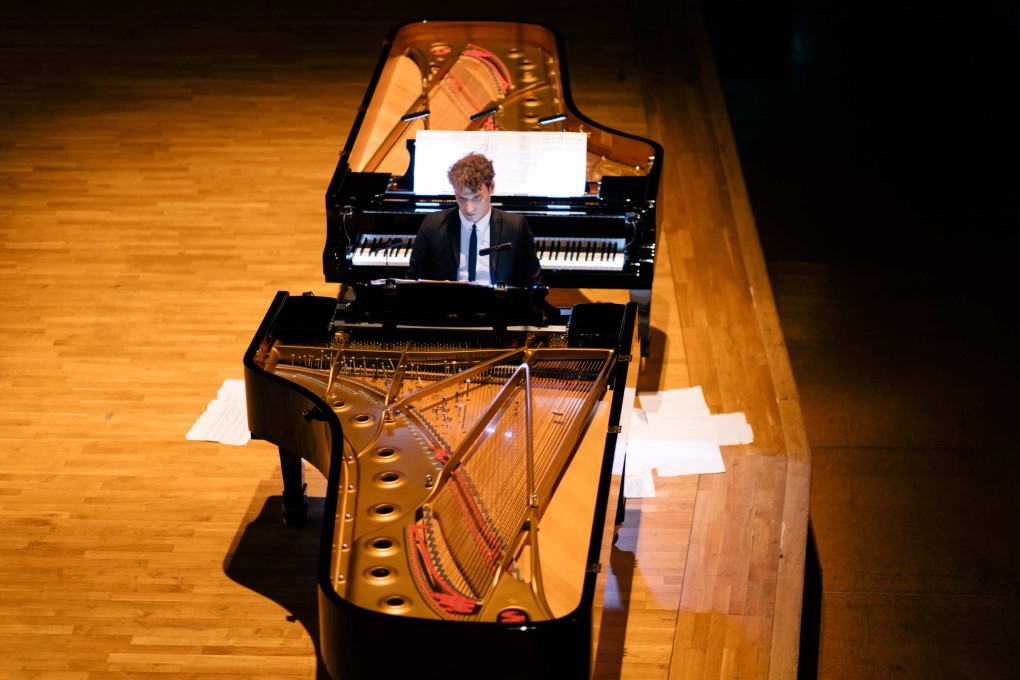Review | Recital of Scarlatti and John Cage piano sonatas by David Greilsammer throws up intriguing questions
- The Israeli pianist alternates between sonatas by Scarlatti and 20th century composer John Cage, the latter played on a prepared piano
- The recital invites the audience to look for similarities between the two composers’ work, and indeed there are some

Place two objects side by side, invite comparison, and connections will invariably arise. Such was the exercise of Israeli pianist David Greilsammer who, by alternating between the sonatas by Domenico Scarlatti and John Cage without pausing, challenged his Hong Kong City Hall Concert Hall audience to explore the relationship between these two rather different, yet exceptionally innovative composers.
First performed in Paris in 2009, “Scarlatti: Cage: Sonatas” has become a signature programme for Greilsammer, who has designed a theatrical set-up for the recital.
In a darkened auditorium, two LED-lit pianos were positioned conversationally, separated by a swivel chair. One of the pianos was modified in accordance to Cage’s direction in the scores of his sonatas – written between 1946 and 1948 – which include meticulous instructions on how to alter around half the notes on the keyboard with bolts, screws, rubber and plastic.

The concert opened with Scarlatti’s D minor Sonata K. 213, which received a highly understated initial reading, and was played quietly and with a floaty touch on the unmodified piano. On the recapitulation Greilsammer played with more stridency and projected its ornamentation, but all within the bounds of delicacy.
Then he swivelled round to the other piano to play Cage’s Sonata XIV, probably selected for its minimalist nature that matched to a degree that of the just-played Scarlatti sonata. Rich in arpeggios, it introduced the audience to a large proportion of the altered notes on the prepared piano, from thuds to Gamelan-like sounds and pierced-bell-like rings that seemed to come from some distant carillon.
